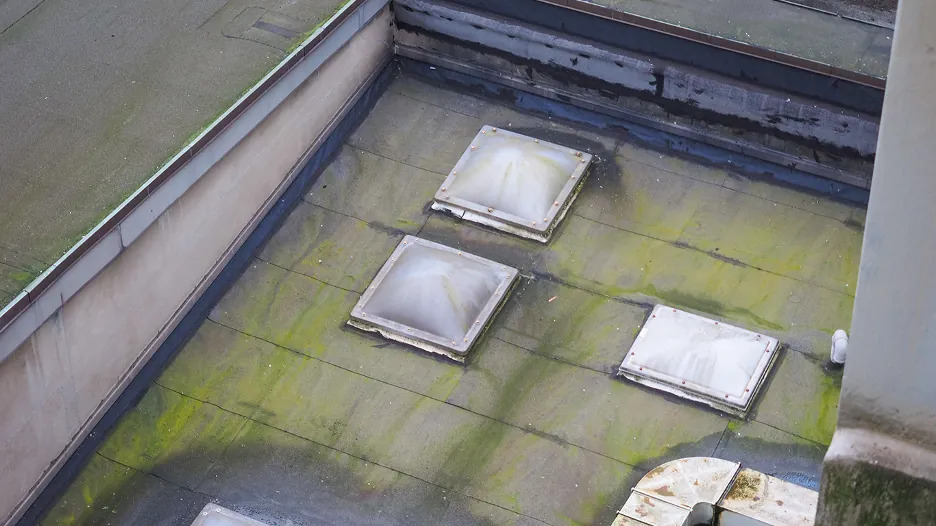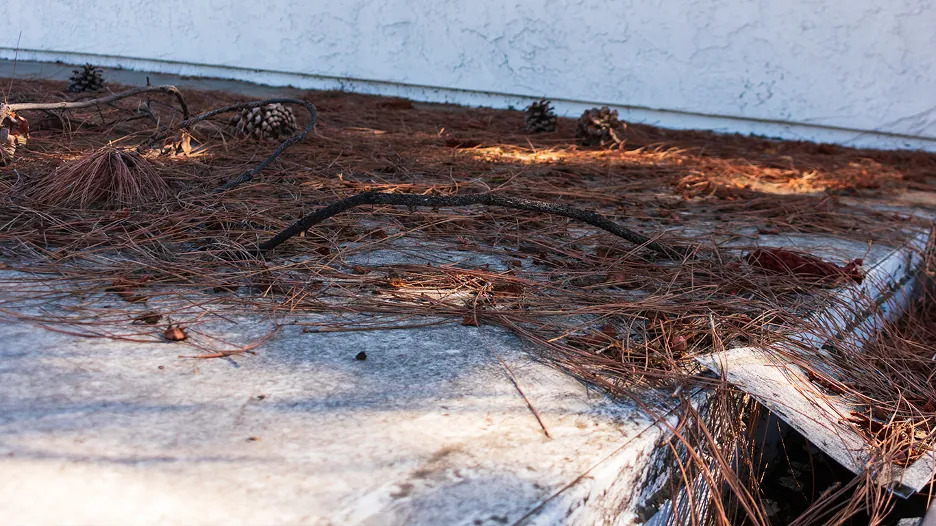Winterize Your Roof: Simple Strategies for Lasting Protection
Winterize Your Roof: Simple Strategies for Lasting Protection
Wintertime can be hard on a roof with the severe conditions that come with the freeze/thaw action, frequent snows, and heavy winds. These conditions often lead to ice dam formation and water leaks that damage roof materials, roof insulation, and the interior of your building over time.
Statistics reveal that water damage and freezing account for 21.3% and 15.6% of business claims in the winter months, respectively. To avoid all this, you should winterize your roof. Doing so eliminates ice dams and protects your insulation, providing you with comfort and cost savings.
Want to know more? This article shares tips for winterizing your roof so you stay protected during colder months.
Tips to Winterize Your Roof

Arrange a Roof Inspection
Over time, especially throughout the summers, your roof may suffer some wear and tear. Scorching UV rays and heavy rains can compromise the integrity of your roof, resulting in cracks and wet insulation. However, fixing the deficiencies during winter can be quite difficult and expensive.
So, first things first, arrange a detailed roof inspection before or right around fall to pinpoint issues that may become a nuisance later. Consult local sources, your friends and family, or social media to find a reliable commercial roof inspection company.
Once you have hired a commercial roofing contractor you are comfortable with, set up an inspection right away before inclement weather arrives. During the inspection, they may look for and fill cracks in the roof membranes that have the potential to trap and freeze melted snow. They can also reinforce flashing around the vents to ensure that your overall roof is prepared to handle the harshness of winter.
Clean the Roof Thoroughly
Branches that hang around or fall on your roof can damage its structural integrity. On top of that, issues like mold and moss can weaken your roof’s surface, trapping moisture that can deteriorate the membrane and lead to perforations that allow moisture to penetrate the roof system.
To avoid these problems, the best tip to winterize your roof is to be purposeful and intentional in planning a deep roof cleaning. It is recommended you hire a professional roof cleaning team who will:
- Remove nesting materials that small animals or birds have built. The cleaning will improve drainage systems and reduce the chances of acidic droppings (Make sure to check if they are protected by law or not before removal).
- Fill all open spots or cracks that may invite pests like mice and cockroaches and make the building a safe haven for both employees and customers.
- Get rid of overhanging or fallen tree branches that could accidentally puncture your commercial roofing material during storms or damage the metal edging.
- Clean out mold and moss buildup to prevent water or moisture retention, bidding a forever farewell to roof decay.
This detailed cleaning not only helps you maintain your commercial roof’s pristine condition but it extends its lifespan during winter and makes the whole inspection process a breeze.
Clean All the Gutters and Downspouts
Many overlook this critical aspect, but thoroughly cleaning the gutters and downspouts is as important as cleaning your commercial roof. Otherwise, rainwater or melted snow can back up into your building during heavy weather events.
If neglected over time, the ponding water will rot the fascia board and routinely allow water to penetrate your roof system. The moist environment invites mold and mildew within the building and wreaks havoc on the ceiling and structural framework.
Because you are probably working from a ladder, it is important to practice safety when winterizing your roof system. One of the easiest ways to be safe is to clean off the roof, roof gutters, and downspouts before the cold arrives. Here are some helpful tips to get started:
1. Gather Your Tools:
Start by collecting all the tools that you will need during the cleaning process. For instance, you should keep:
- Ladder to access the gutters
- Gloves to protect hands against sharp debris
- Gutter scoop to take out the debris
- Basket to collect all the dirt
- Flush out the remaining particles
2. Remove Larger Debris:
Use the gutter scoop or your hands to pick up large debris, including leaves and twigs. If the dirt is stubborn, like stuck to the gutter surface, a garden trowel can help you remove it.
3. Flush the Remnants:
Now that you have removed large debris, attach a spray nozzle to your garden hose and direct it towards your roof gutter to flush out dust and other small particles.
4. Clear Downspout Blockage:
Use a plumber’s snake or a high-pressure garden hose to dislodge the dirt stuck inside so water quickly moves away from your commercial building.
Tip: Commercial roof gutters can be quite large and very high, so contact a professional cleaner to do all the work for maximum results.
Re-apply Protective Sealant
Roof sealants can last a long time, typically 10 to 20 years. However, this varies depending on the thickness of the coating and your commercial roof maintenance routine.
We suggest you keep an eye on your commercial roof’s protective sealants to check if they’re wearing thin, cracking, or peeling off. If the sealant is compromised, you should get it immediately re-applied to ensure your commercial roof’s insulation and drywall stay intact.
As a result, your building will not only maintain a neat appearance, but the proper insulation will also help ensure a warm temperature, creating a comfortable and pleasant working experience.
Have a Proper Ventilation System
One of the best “winterize your roof tips” is to have a proper ventilation system in your commercial roof. For instance, you should have static vents so that warm air circulates in the building and goes upward to melt ice. In addition, you should have a proper HVAC system installed that keeps the building’s upper area warm, eliminating the chance of snow buildup.

FAQs
What are the most common problems that may arise if you don’t winterize your commercial roof?
Some common problems that you may face without winterization include ice dams, roof membrane cracks, leaks, and poor drainage systems that result in water damage and costly repairs.
What are the best commercial roof sealants to apply during winterization?
The best commercial roof sealant options you can explore during winterization include acrylic sealants and silicone sealants, which are both highly durable.
Is it necessary to hire a professional to winterize your roof?
Yes, it’s suggested that you get professional help for commercial roof winterizing, as it allows you to focus more on business tasks while the experts handle everything from cleaning the roof to sealant application and gap filling.
Conclusion
It’s mandatory to follow all the winterize your roof tips to make sure your commercial roof is prepared well to withstand the rigors of winter. However, if you are struggling to manage all these tasks, contact Commonwealth Roofing Corp! We have a team of roofing experts who take care of everything from roof cleaning to repairs and regular maintenance so you can have peace of mind that your roof is in good hands.


